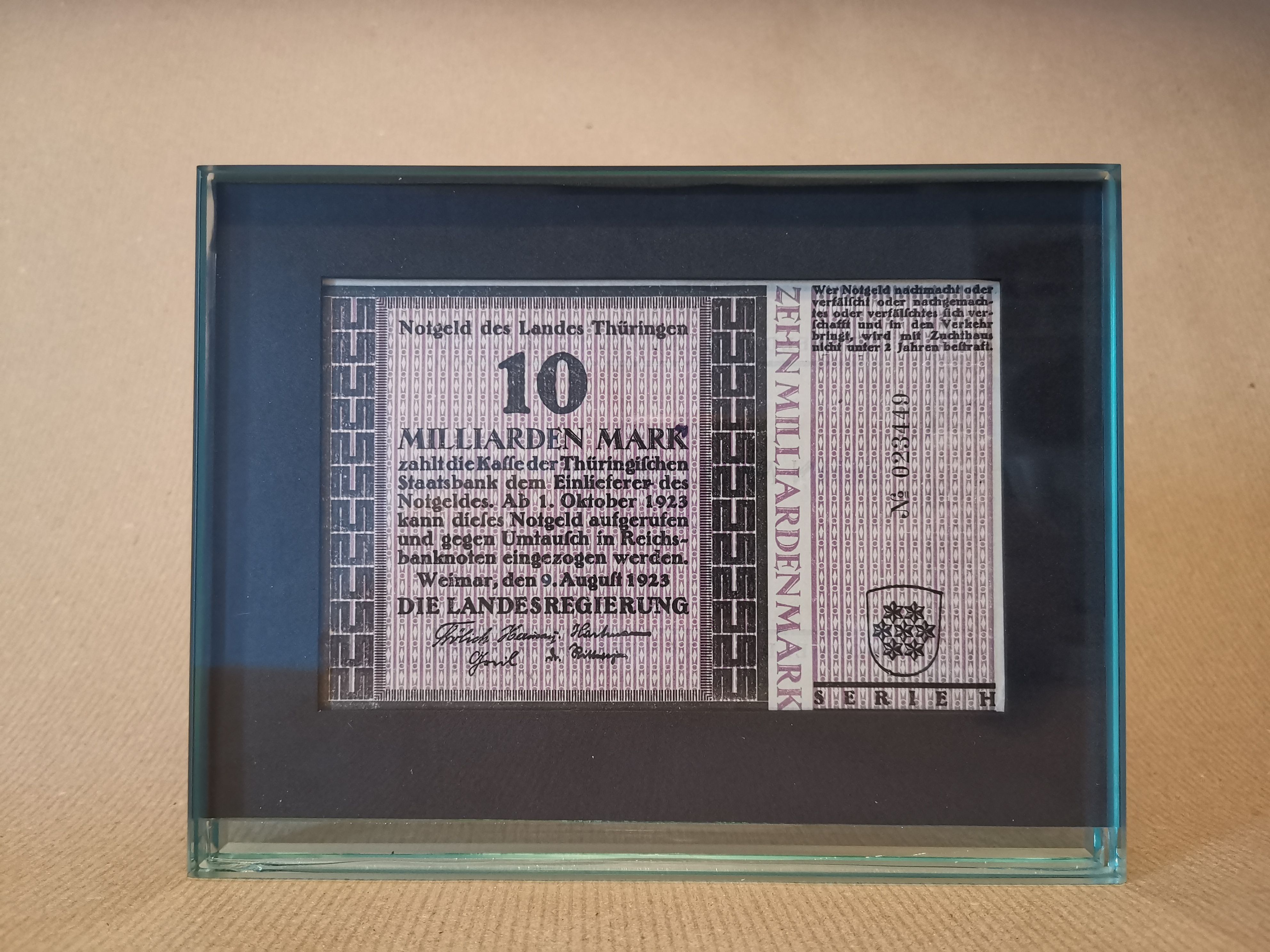Stay Connected
Join our mailing list to receive product drop announcements




Winning Bid
ragilab
300K sats
We will email you if the seller accepts your offer.
May 4, 2022 4:52:28 PM UTC
300,000 sats
0.003 BTC
May 4, 2022 12:37:37 AM UTC
200,000 sats
0.002 BTC
May 3, 2022 7:19:40 PM UTC
100,000 sats
0.001 BTC
What is “Bauhaus”? This is the name of German design school which created industrial design as such. By strange coincidence it was created in the very tragic times. Although, may be it wasn’t. People’s needs do not decrease if the currency devalues rapidly. It appears to be quite opposite: consumers demanded for goods to be cheap and functional and Bauhaus addressed it. Even if you generally not familiar with art styles or design schools, you may recognize such (arm-)chair.
One of the leader of Bauhaus was Hannes Meyer from 1928 to 1930. Among other things he designed these bills and here is when we move to money topic. On the picture you can see so called “Emergency Money”, or Notgeld which is the item to be auctioned. They gave German Weimar Republic hyperinflation such a distinctive feature because they were very different. And Bauhaus Notgeld are special among others because of their design combining simple aestatics and function of money substitute. We have researched two sources (1, 2) and we can conclude that the item to be auctioned wasn’t designed by Hannes Meyer although people sometimes attribute 10 billion marks to him.
But we still think that the auctioned bill belongs to Bauhaus school. And this is why, first and foremost it was Notgeld issued by Thuringia, which is the state where city of Weimar situates. On the photos from the Bauhaus museum you can see dates 9 August 1923 while 10B bill has 1 October 1923. In a couple of months local authorities needed to issue bills of 200 times larger denomination. The design of the face side of the bill is simple functional and let us know that at the moment of issue prices were normally count in billions. While the flip-side looks overloaded and dark. We have an idea why it was made this way. All ornaments and overprints likely served for making counterfeit of the bills harder. The bill simply has no protection mechanism because the production must be cheap.
Back in 1920s many businesses and municipalities as well practiced issuing their own money mostly as a measure to ease inconveniences of direct barter.
In October 1923 it was noted in the British Embassy in Berlin that the number of marks to the pound equalled the number of yards to the sun. (Adam Fergusson)
As you can find out from this forum on 22 October 1923 some person paid for some portion of potato 10B Marks. If this person lived in the city of Weimar, this bill might be used for the payment.
https://telegra.ph/Proof-of-Story-10B-Bauhaus-Notgeld-04-24
Physical Artwork:
NO RESERVE
Join the Scarce City Banter Telegram channel for auction updates, commentary, and sat giveaways.